



A high-pressure nozzle is your best ally in tackling dirt and grime on a solid surface. Pair it with a rotating surface cleaner attachment to enhance efficiency, ensuring a thorough approach without missing any spots. Selecting the right detergent is equally important; opt for a biodegradable cleaner to protect the environment while boosting cleaning power.
Start at a distance of around 12 inches from the surface to avoid damage, gradually moving closer as you gauge the effectiveness. Maintain a steady sweeping motion, overlapping each pass to prevent streaks. For stubborn stains, allow the cleaner to sit for a few minutes before rinsing, as this prepares the surface for optimal removal.
Consider using a hot water unit if available, as heat combined with pressure significantly increases the likelihood of getting rid of tough marks. When operating, don your safety gear including goggles and gloves to ensure personal protection from debris and chemicals, which can pose risks during the process.
Finally, remember that maintaining a consistent maintenance routine can prevent the build-up of dirt over time. Invest in a suitable sealant once the surface is dry to safeguard against future stains and prolong the life of the area treated.
Selecting the Right Pressure Washer for Concrete Cleaning
For effective washing of hard surfaces, I recommend choosing a model that delivers a minimum of 3000 PSI coupled with a flow rate of at least 2.5 GPM. These specifications ensure robust performance against dirt and stains. Consider electric machines for small areas, while gas-powered units are ideal for extensive jobs.
Types of Nozzles
Utilising an appropriate nozzle is vital. The 15-degree nozzle is typically the best choice for tough stains and grime, as it provides a focused jet that penetrates deeper into the surface. A wider 25-degree nozzle comes in handy for rinsing and surface washing without damaging the material.
Additional Features
Look for models with adjustable pressure settings. This function allows you to vary the intensity, ensuring sensitive areas are not harmed while still efficiently removing debris. A detergent tank can also enhance performance, enabling you to incorporate cleaning solutions that further break down stubborn contaminants.
Identifying Suitable Cleaning Solutions for Concrete
For an effective approach, I recommend using a specially formulated alkaline detergent for tough stains on a concrete surface. These products are designed to break down oils, grease, and grime, ensuring thorough results.
Recommended Ingredients
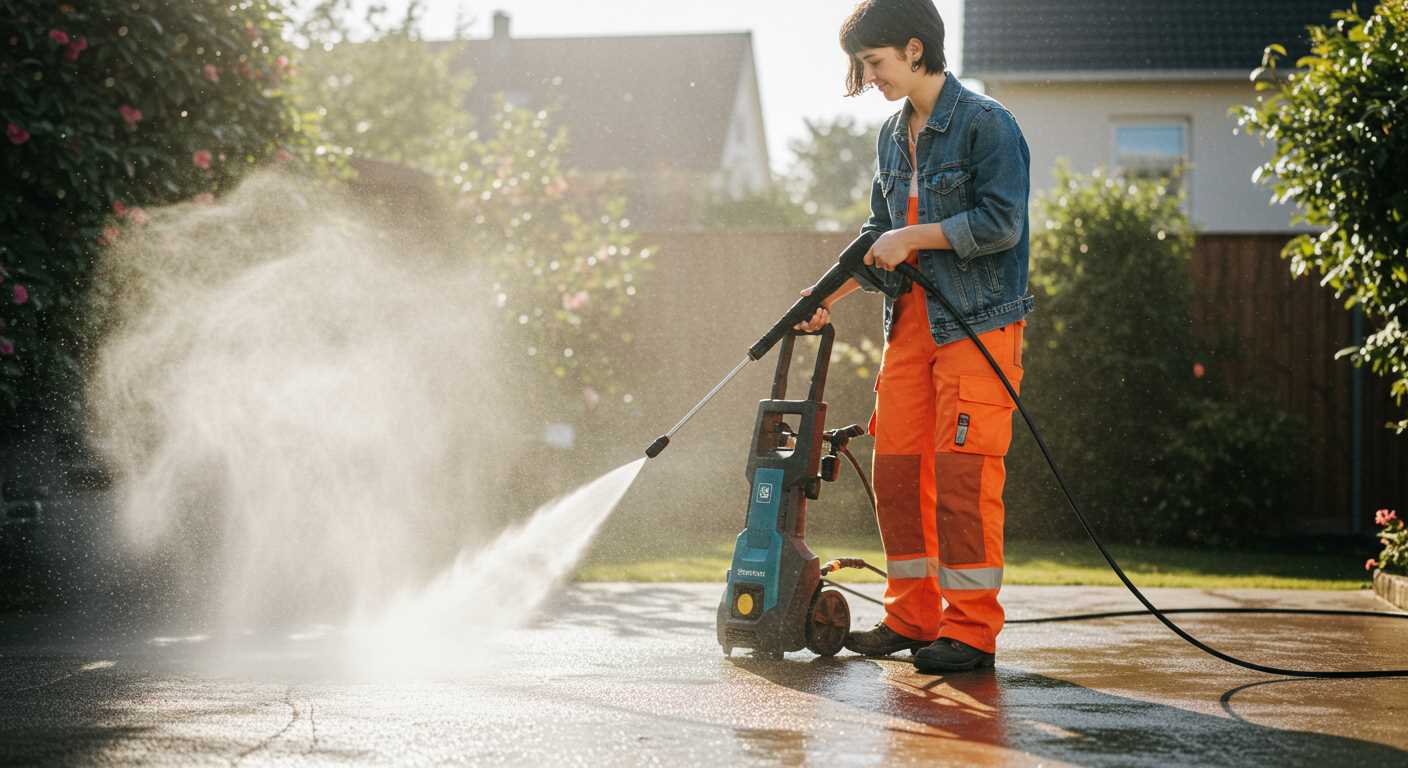
- Sodium hydroxide: Known for its strong degreasing properties, this chemical efficiently tackles heavy staining.
- Baking soda: An eco-friendly option, which acts as a gentle abrasive, perfect for lighter blemishes.
- Citric acid: Effective for removing rust and mineral deposits, providing a natural solution for mild discolouration.
Additional Cleaning Agents
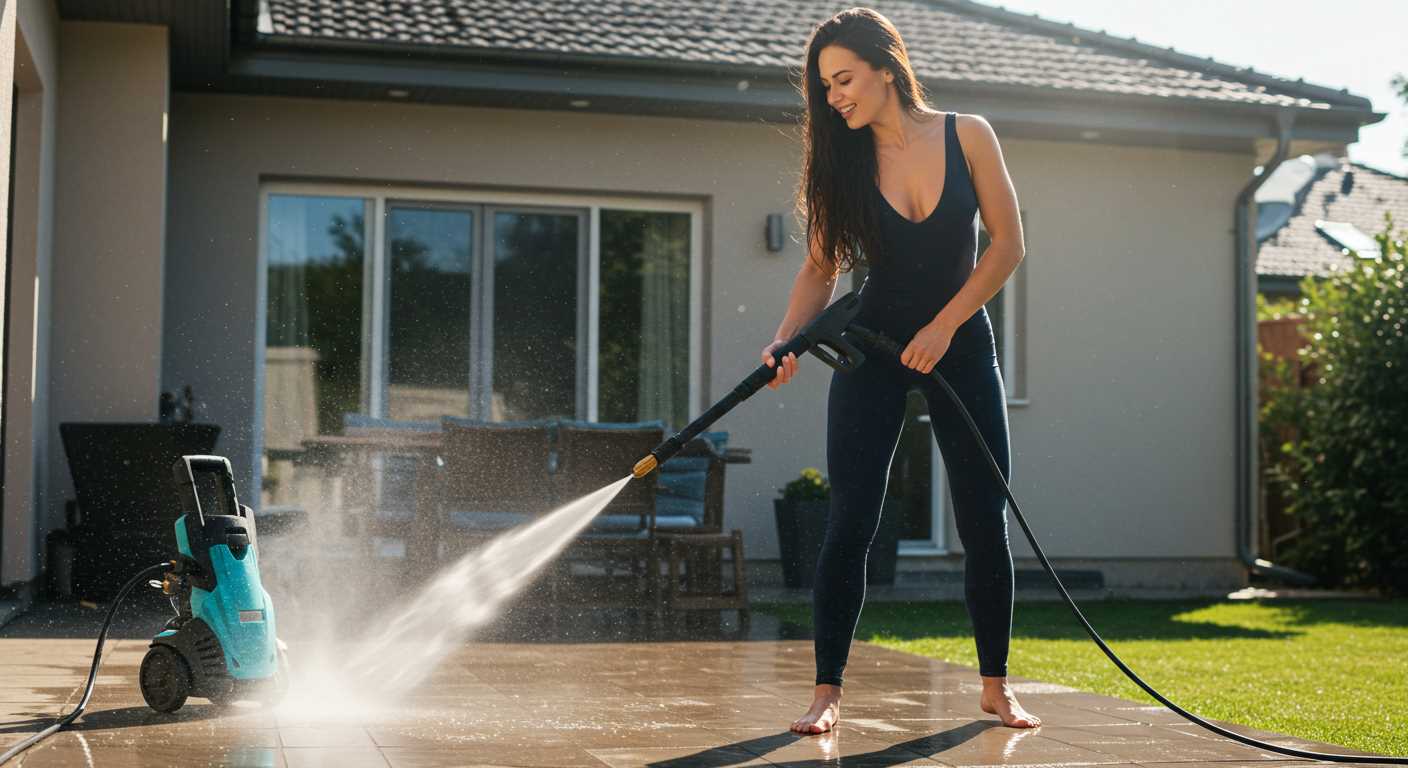
- Hydrogen peroxide: Excellent for tackling organic stains, such as those from leaves or food.
- Commercial concrete cleaners: Many brands offer products specifically designed for this task, combining various surfactants for optimal performance.
In all cases, ensure to follow manufacturers’ instructions for dilution and application to maximise performance and protect the surface. Experimenting with a small patch before full application will also help gauge results without risking damage.
Preparing the Concrete Surface Before Washing
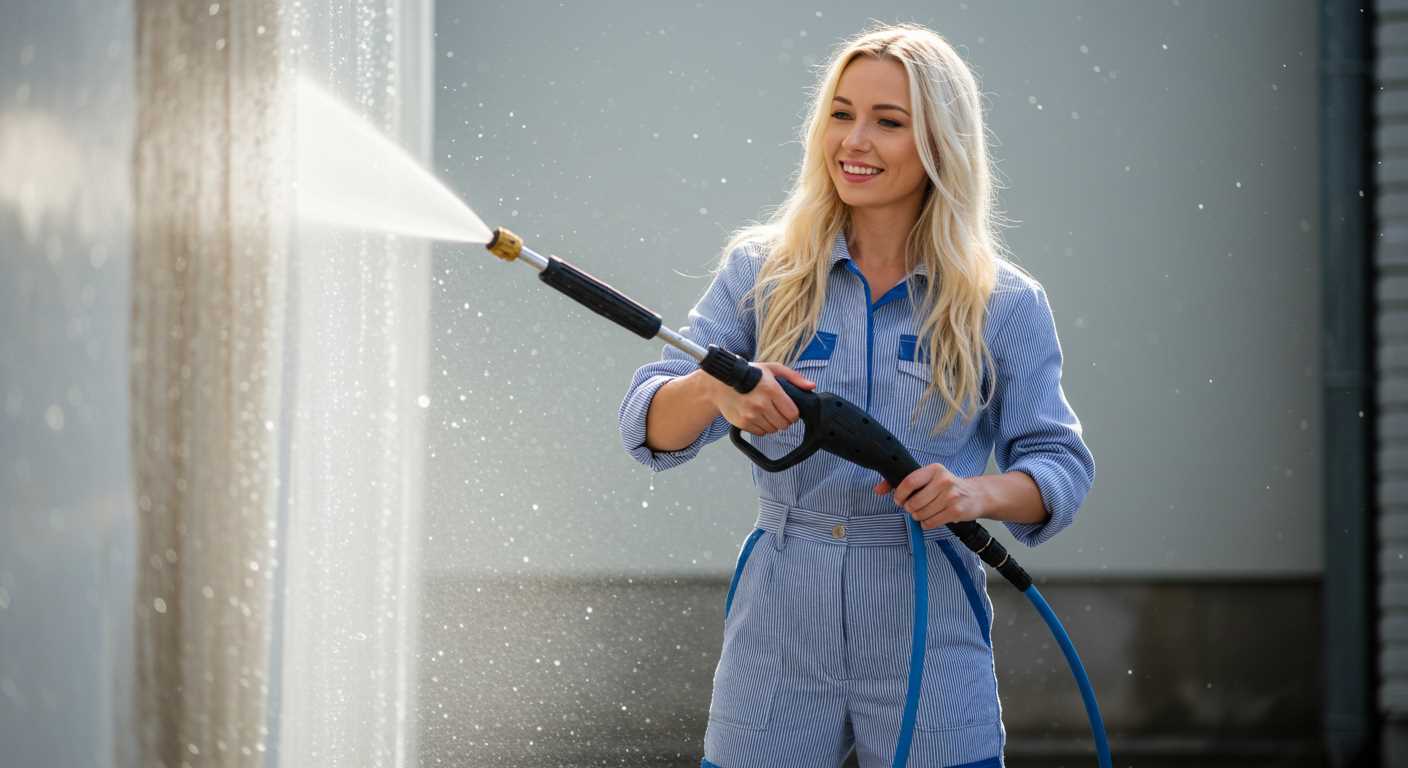
For optimal results, it’s imperative to thoroughly clear the area of any debris, leaves, or large particles. Begin by sweeping or using a leaf blower to create a clean working environment. This prevents larger items from interfering with the washing process.
Next, inspect for oil stains, mould, or other tough marks. For stubborn spots, consider utilising a degreaser or appropriate stain remover prior to high-pressure cleaning. Apply the solution directly onto the affected areas and allow it to penetrate for a minimum of 10 to 15 minutes before rinsing.
If there are loose pieces or damaged areas on the surface, repair those before proceeding. Fill in cracks with a suitable filler to ensure a uniform surface during the washing. This not only improves effectiveness but also minimises the risk of further damage during the operation.
Verify the weather conditions, targeting a dry day. Avoid windy conditions which can lead to unnecessary mess and uneven results. Allow the surface to dry completely to prevent trapping moisture while washing.
Finally, mark boundaries and ensure nearby plants and delicate items are protected. Use a tarp or plastic sheeting to shield them from any overspray or debris. Once all preparations are complete, you’re ready to begin the actual washing process, ensuring optimal cleanliness and safety for your surface area.
Adjusting Pressure Settings for Optimal Cleaning
For remarkable results on hard surfaces, set the pressure on your machine between 2500 and 3000 PSI. This range is generally optimal for most stains, providing sufficient force to dislodge dirt and grime without causing damage.
Start at the lower end of the scale. If the surface is heavily soiled, gradually increase the intensity while observing the impact. This approach safeguards against potential etching or surface degradation, especially on porous materials.
Additionally, consider the nozzle type. A 25-degree nozzle delivers a wide spray, ideal for broader areas, while a 15-degree nozzle concentrates force for stubborn spots. Using the wrong nozzle can dilute your efforts and lead to inefficient results.
Adjust the distance between the nozzle and the surface as well. Keeping it around 12 to 18 inches ensures effective removal of contaminants while minimising the risk of damage. Experimenting at different distances can help identify the sweet spot for your specific needs.
Lastly, monitor your machine’s performance. If the output seems inconsistent, it might be worth reviewing your pressure settings or even the condition of your equipment. Regular maintenance can significantly enhance functionality and ensure a flawless cleaning experience.
Choosing the Best Nozzle for Concrete Cleaning
A rotating nozzle, often referred to as a turbo nozzle, is the most effective choice for tackling stubborn stains on surfaces. It combines a concentrated stream of water with a spinning motion, providing exceptional cleaning power while minimising surface wear.
Angle Considerations
Nozzles are typically available in various angles, including 0°, 15°, 25°, and 40°. For most heavy-duty applications, a 15° or 25° nozzle strikes the right balance between pressure and coverage. The narrower the angle, the more forceful the spray, making it ideal for difficult grime or ingrained dirt. However, take care to maintain a safe distance to avoid damaging the surface.
Materials and Durability
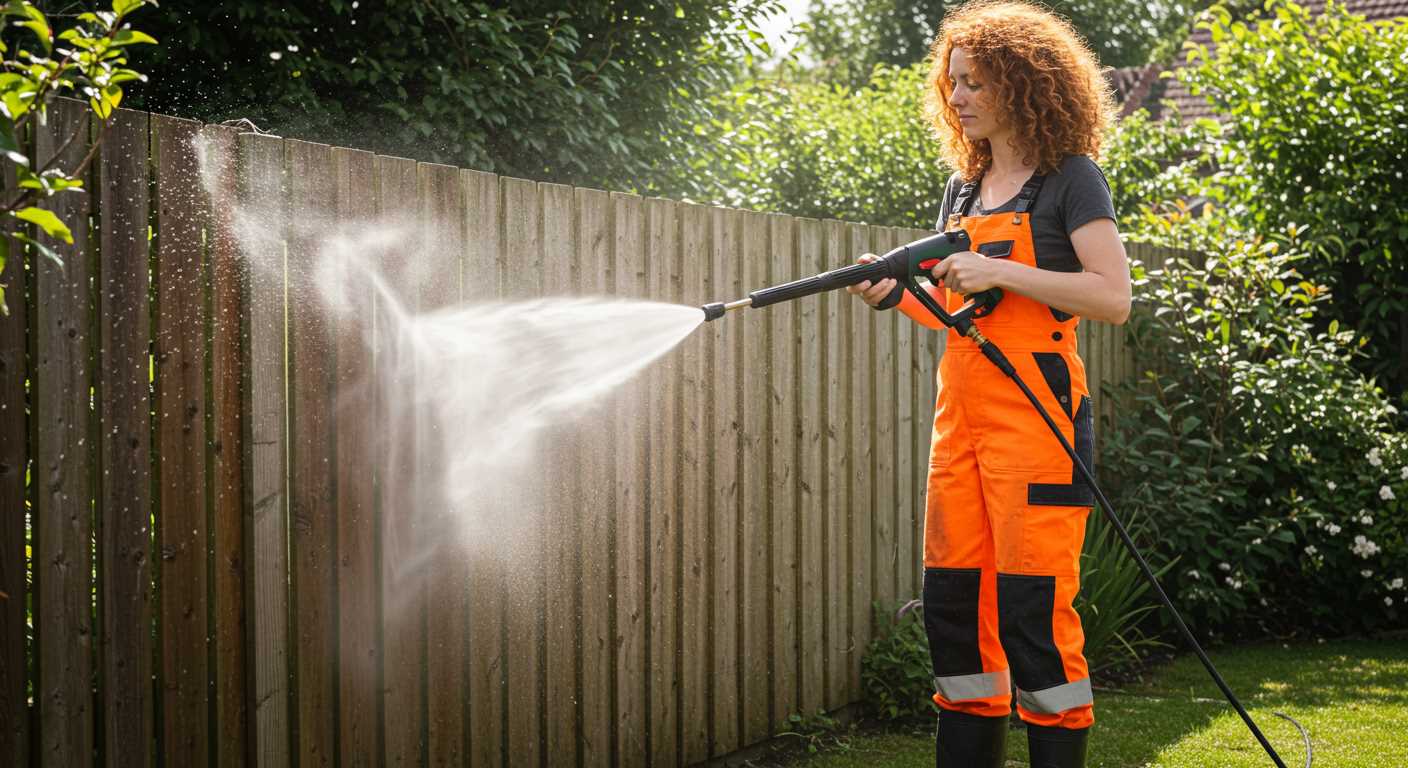
Look for nozzles made from stainless steel or high-quality ceramics. These materials resist wear and tear from high-pressure water streams and chemical exposure, ensuring a longer lifespan. Cheaper plastic options may not hold up under intense use and can degrade more quickly, necessitating frequent replacements.
Techniques for Targeting Stains and Dirt
Begin by assessing the type of discoloration on the surface. Different substances call for specific approaches:
- Oil Stains: Apply a degreaser to the area before treatment. Let it sit for about 15 minutes to penetrate the oil, then use a wide-angle nozzle to apply steam with uniform motion.
- Mould and Mildew: Use a mixture of bleach and water. Spray on the affected areas and allow it to sit before rinsing. A low-pressure setting is best for this, as it prevents the mould from spreading.
- Rust Marks: Employ a dedicated rust remover. Apply it directly to the stains, scrubbing lightly, then follow with hot water to rinse thoroughly.
- Food Debris: For gum or food remnants, use a scraping tool before washing. Complement with a concentrated cleaning solution applied directly to the spots.
Technique Application
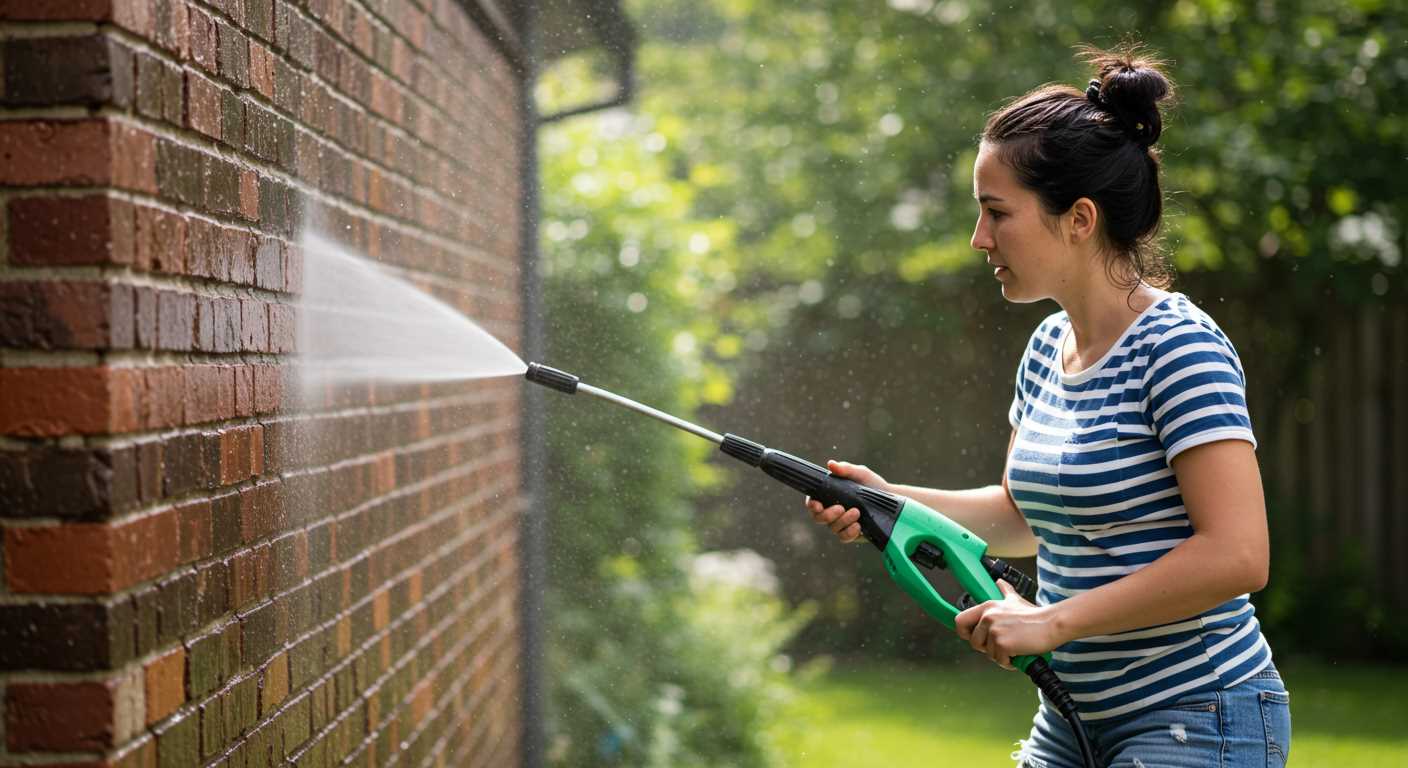
While applying these products, maintain a consistent distance of 12-18 inches from the surface. This approach ensures even coverage and prevents damage.
- Move the nozzle in a sweeping motion, overlapping each pass slightly to ensure no spots are missed.
- For stubborn areas, pause and focus on those spots, but avoid prolonged exposure to prevent etching.
Always follow up with a thorough rinse to remove any residual cleaning agents, ensuring the surface is free from contaminants that may result in discolouration later on. After rinsing, conduct a final inspection for any remaining stains, repeating the necessary steps until satisfied.
Safety Precautions to Consider During the Cleaning Process
Always wear appropriate protective gear, including safety goggles, gloves, and sturdy footwear. This prevents injuries from debris and high-pressure water spray.
Ensure that the workspace is clear of children, pets, and bystanders. Establish a safety zone to minimise the risk of accidents during operation.
Check the area for electrical outlets or wires before beginning. Keep the washer and hoses clear of any electrical hazards to avoid shocks or short circuits.
Before starting the equipment, inspect hoses and connectors for wear or damage. Replace any faulty components to prevent leaks and ensure optimal performance.
Maintain a firm footing while operating the unit. Use flat, stable surfaces to prevent slipping and losing control of the device. Avoid using on steep slopes.
Be aware of your surroundings and any potential hazards, such as overhanging branches, uneven ground, or obstacles that could interfere with the cleaning process.
Always follow the manufacturer’s instructions regarding operation and maintenance. Each device may have specific safety features and guidelines essential for safe handling.
Finally, unwind hoses properly to prevent kinks, and disconnect the unit when not in use. This helps avoid future accidents or equipment malfunctions.
Post-Cleaning Care and Maintenance for Concrete Surfaces
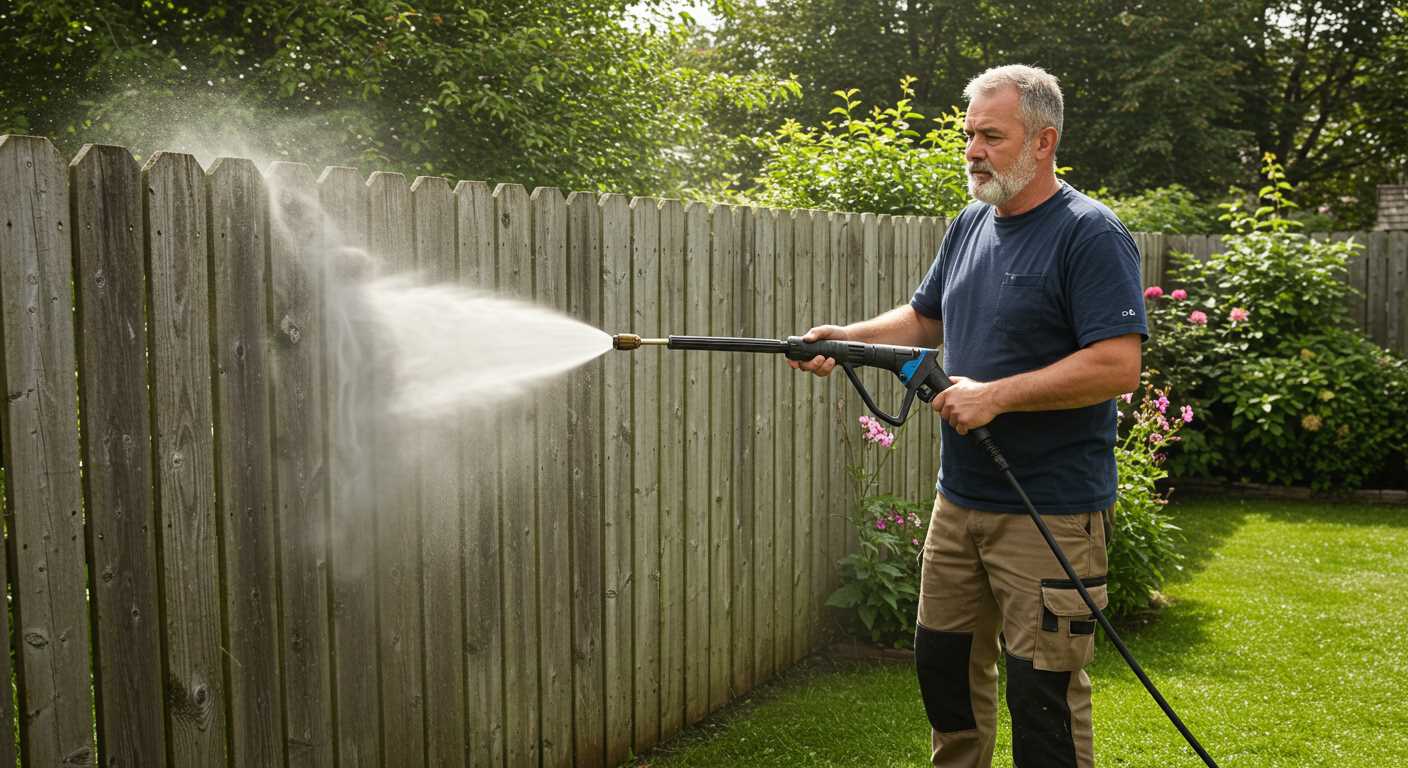
Applying a sealant on its surface is critical after a thorough rinse of concrete. This protective layer prevents moisture infiltration and shields against stains. Select a high-quality sealant suited for the material type. A two-coat application is usually advisable for optimal protection.
Regular inspection is necessary. Look for cracks or surface erosion that may require timely repairs. Fill small fissures with a suitable concrete repair compound to prolong lifespan. For more extensive damage, consider professional assessment and solutions.
Implementing a consistent maintenance routine is beneficial. Sweep and remove debris weekly to prevent dirt accumulation. Monthly washings with mild detergents aid in preserving the aesthetic appeal.
In winter, applying de-icing agents can prevent freeze-thaw damage, which can be particularly damaging. Always opt for non-corrosive products to protect the surface integrity.
Here’s a quick reference for post-cleaning maintenance:
| Maintenance Task | Frequency | Recommended Action |
|---|---|---|
| Sealing | Every 2-3 years | Apply high-quality sealant |
| Inspection | Quarterly | Check for cracks and damage |
| Debris Removal | Weekly | Brush or sweep surface |
| Washing | Monthly | Use mild detergent |
| Apply De-Icer | As needed in winter | Choose non-corrosive products |
Maintaining concrete surfaces is straightforward but requires diligence to ensure longevity and visual appeal. Consistent care translates to enduring quality and reduces the need for expensive repairs in the future.







